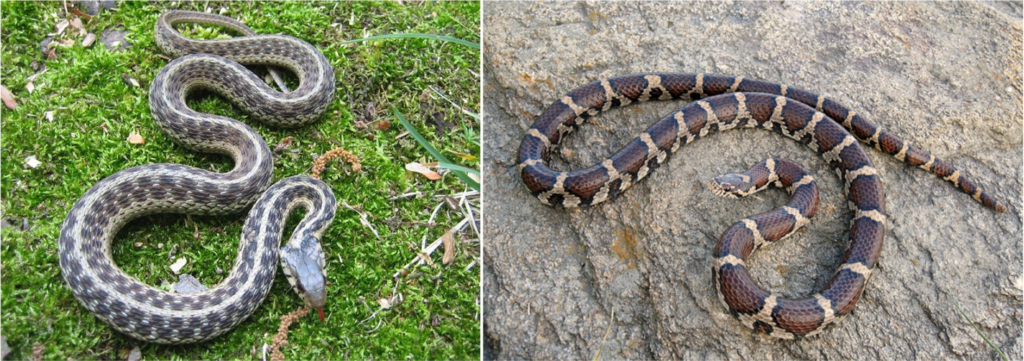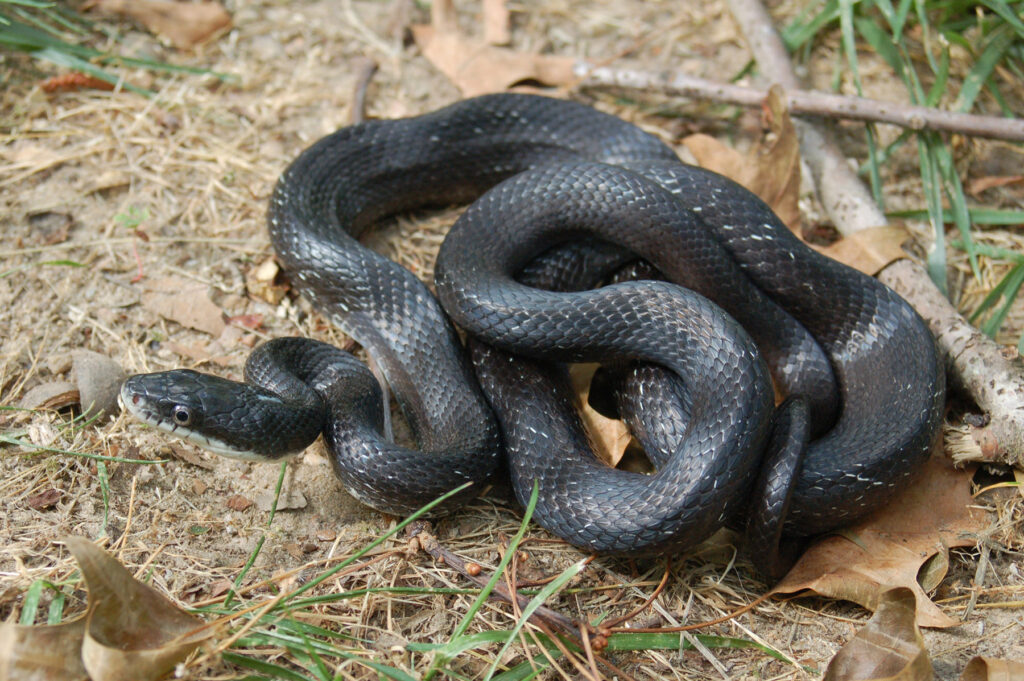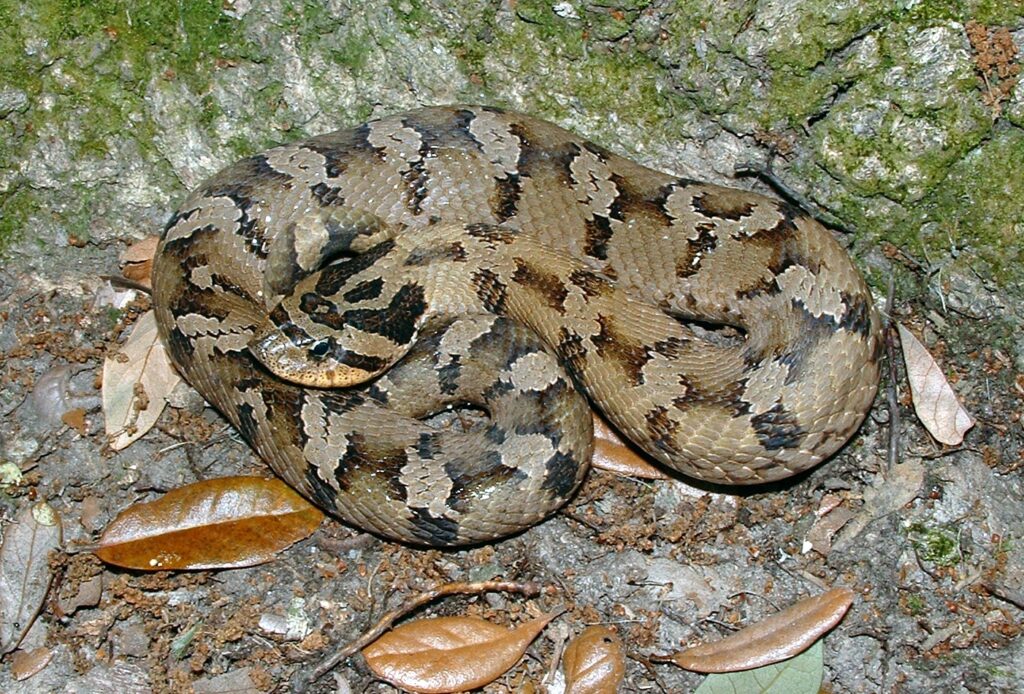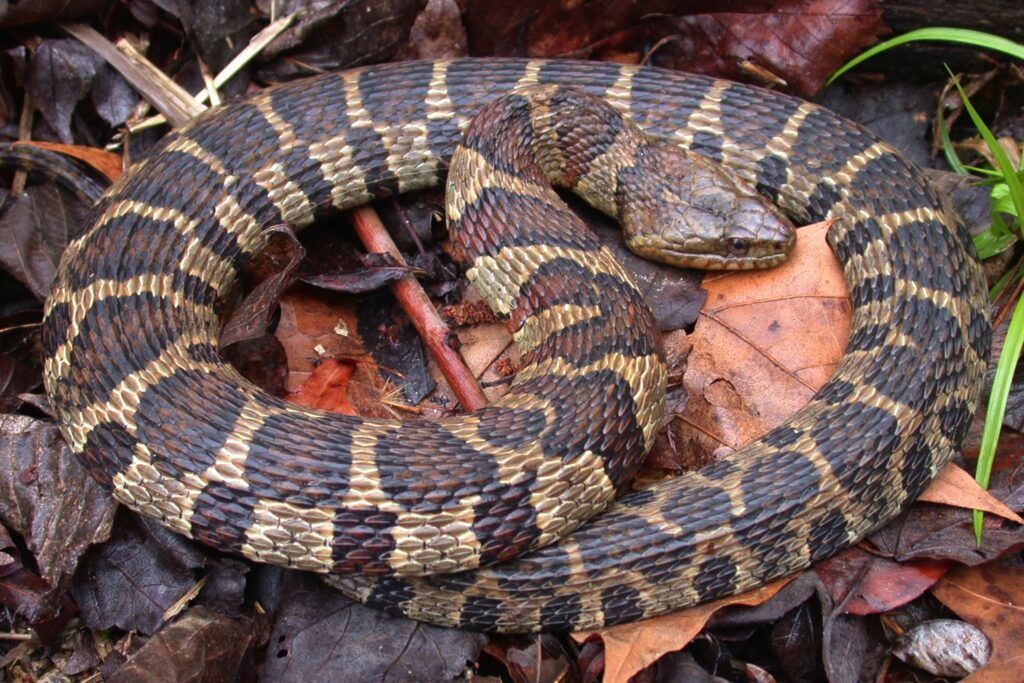Common Snakes of the High Country of Western North Carolina
go.ncsu.edu/readext?930651
en Español / em Português
El inglés es el idioma de control de esta página. En la medida en que haya algún conflicto entre la traducción al inglés y la traducción, el inglés prevalece.
Al hacer clic en el enlace de traducción se activa un servicio de traducción gratuito para convertir la página al español. Al igual que con cualquier traducción por Internet, la conversión no es sensible al contexto y puede que no traduzca el texto en su significado original. NC State Extension no garantiza la exactitud del texto traducido. Por favor, tenga en cuenta que algunas aplicaciones y/o servicios pueden no funcionar como se espera cuando se traducen.
Português
Inglês é o idioma de controle desta página. Na medida que haja algum conflito entre o texto original em Inglês e a tradução, o Inglês prevalece.
Ao clicar no link de tradução, um serviço gratuito de tradução será ativado para converter a página para o Português. Como em qualquer tradução pela internet, a conversão não é sensivel ao contexto e pode não ocorrer a tradução para o significado orginal. O serviço de Extensão da Carolina do Norte (NC State Extension) não garante a exatidão do texto traduzido. Por favor, observe que algumas funções ou serviços podem não funcionar como esperado após a tradução.
English
English is the controlling language of this page. To the extent there is any conflict between the English text and the translation, English controls.
Clicking on the translation link activates a free translation service to convert the page to Spanish. As with any Internet translation, the conversion is not context-sensitive and may not translate the text to its original meaning. NC State Extension does not guarantee the accuracy of the translated text. Please note that some applications and/or services may not function as expected when translated.
Collapse ▲As warmer Spring days heat up the landscape here in the High Country of western North Carolina, wildlife begin to emerge from their winter hiding places as our bears, birds, bugs, and beasts get their warm-weather wake-up call. In the late afternoons & evenings, you’ll hear spring peepers around any ditch, pond or other body of water, and more than likely, you may come across any number of our no-legged neighbors around your landscape, along our creeks, and crossing our roads. However, in general, there’s no reason to be alarmed. While our two venomous species, copperheads and rattlesnakes can be encountered, mainly in lower elevations (below 3,000 ft) on sunny slopes and rock outcrops, the vast majority of snakes that are common around our creeks and backyards are non-venomous and play an important role in our ecosystem.
Here are the most common snakes found in the mountain counties of western North Carolina (photos from NC Partners in Amphibian and Reptile Conservation & NC Wildlife Resources Commission).
Perhaps the most commonly seen snakes that are native to our area are eastern rat snakes. Commonly referred to here in the mountains as ‘blacksnakes,’ rat snakes are very common, in general, across the southeast, but vary in color depending on where you are. Here in the mountains, the majority are mainly jet black with some small white patches and stripes. They feed on mice & other rodents and are often found in and around barns & outbuildings—or attics and basements. If you have a blacksnake around the house, they are more than likely keeping your mouse population under control. They are also notorious bird nest raiders, so if you keep chickens, be prepared for regular visits by these egg-eaters. They can get quite long—over 6 feet—but are generally good natured. Some are downright easy to handle (if you’re the snake-handling type). Although, some, when caught in the open, will coil up and ‘rattle’ their tail as a warning and strike when approached.
Other common snake species around the home and yard include garter snakes & milk snakes. Many people often confuse these snakes with copperheads due to their coloration patterns and somewhat ‘triangle-shaped head’ (many snakes have heads that have that general shape), but apart from being somewhat aggressive (and ‘bitey’ if handled), they are harmless insect and frog eaters. While these snakes can get up to 2-3 feet long, they’re more common in the 1-2 feet range.

Left: garter snake. Right: milk snake. These two species are commonly found in the landscape and often confused with copperheads due to their ‘aggressive’ demeanor.
Brown snakes and ring-necked snakes are also common to find around the house under rocks, logs, (and sometimes in the garage under ‘stuff’). They tend to be in the 6-inch length range and are quite docile. They are insect-eaters and the species that most kids tend to bring into the house :)

Brown snakes (left) and ring-necked snakes (right) are small snakes often found under rocks and logs.
While less common, the eastern hognose snake can be found in and around wooded areas on your property or crossing and/or lounging on trails. Their coloration also gets them confused with copperheads and hognose snakes have a tendency to flatten out their head and mid-section when confronted, giving the impression that it’s a ‘hostile’ species. They’re just doing this to scare YOU off…which hopefully works, and you leave it be.
Perhaps the most misidentified species of snakes here in the High Country are our water snakes. To be clear, we do NOT have water-moccasins/cottonmouths in the mountain counties! We do have a few species of water snakes, the most common being the northern water snake. They can get large (up to 5 feet long) and do have bright to dull brown patterns and an irritable demeanor. While these snakes are not ‘friendly’ and do often strike and bite when approached or handled, they are non-venomous and would prefer to be left alone. As with any snake here or elsewhere, if you don’t want a confrontation with a snake…don’t confront it!







